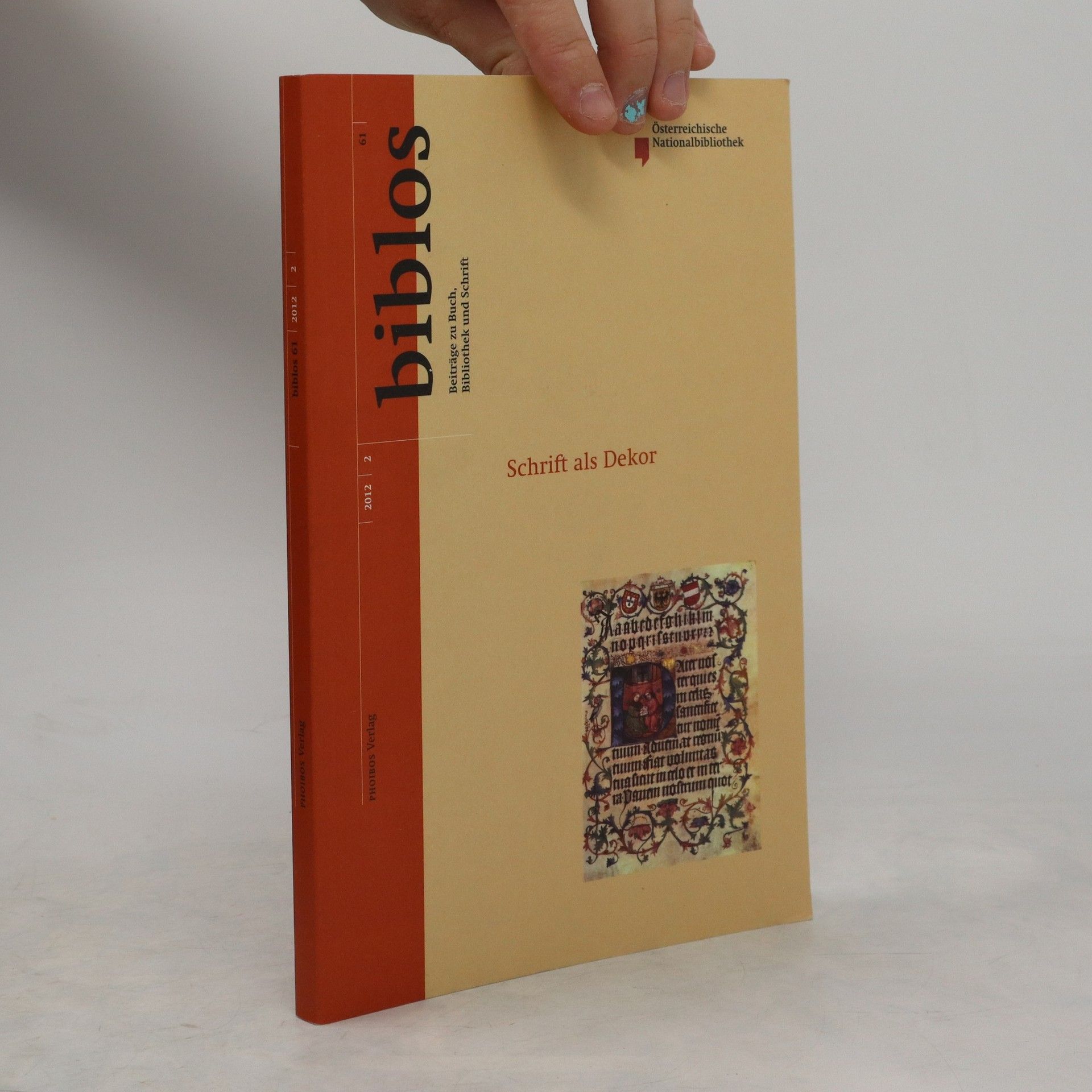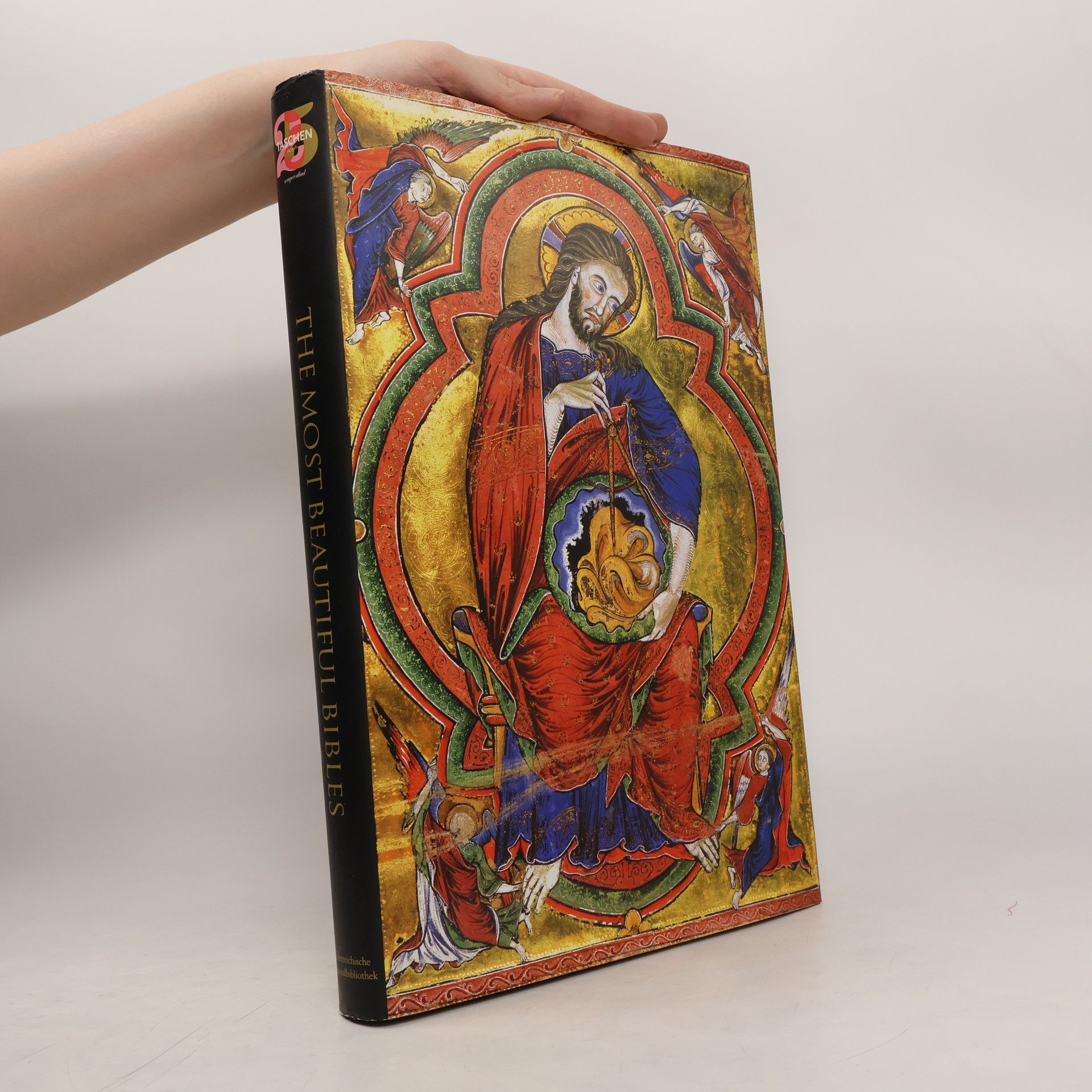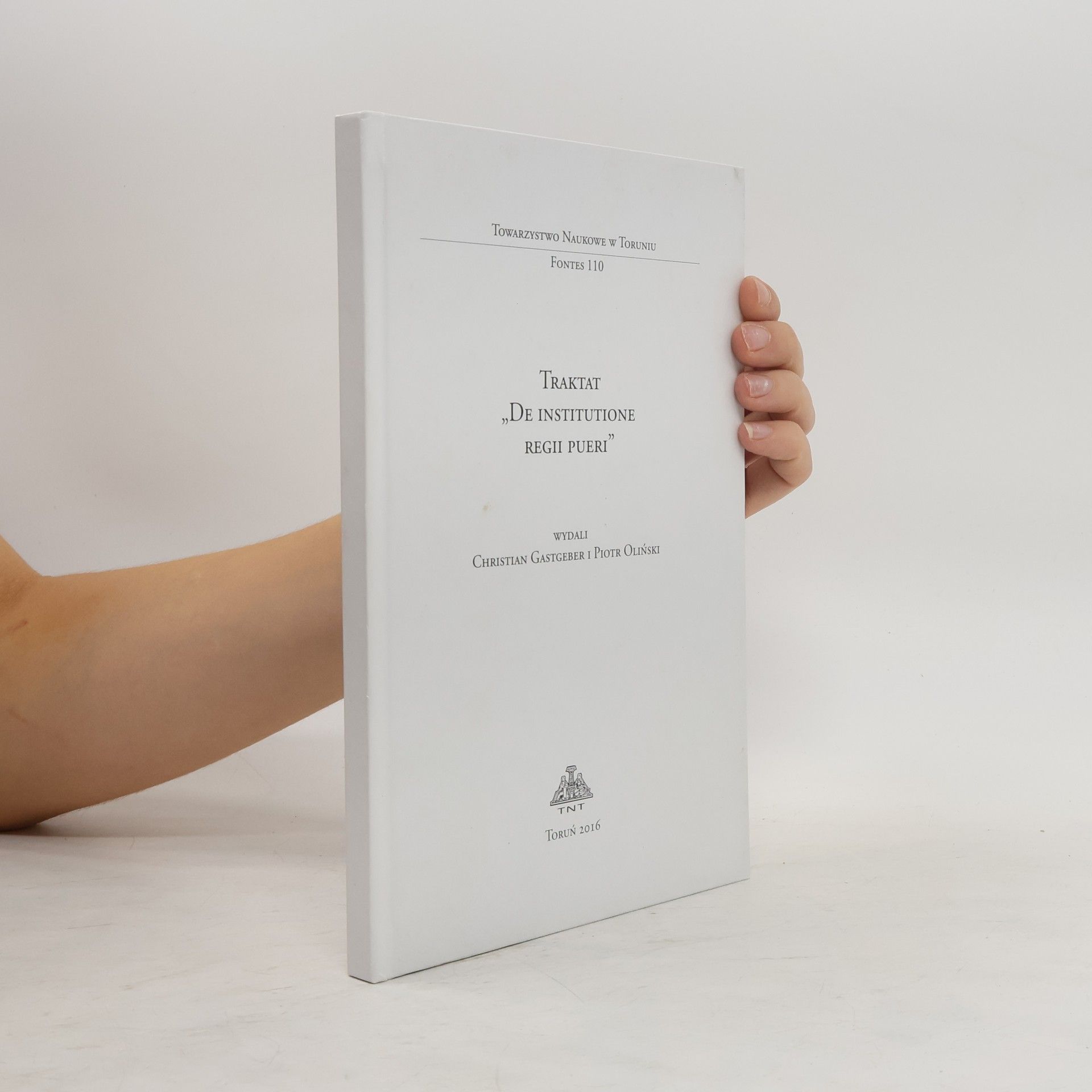A team of 15 scholars describes each biblical manuscript in detail and explores the evolution of the Bible, as well as the medieval understanding of history that is inherent in these versions of the Bible. Also includes a glossary of important biblical terms.
Christian Gastgeber Boeken







The book of Bibles : the most beautiful illuminated Bibles of the middle ages
- 464bladzijden
- 17 uur lezen
Discover 50 of the most exquisite and important medieval bible manuscripts, at once art historical treasures and precious religious artifacts. Published in partnership with the Austrian National Library, this stunning collection spans every epoch of the Middle Ages, revealing both the evolution of the Bible and the shifting history of the age.
Die Ostkirchen in Wien
Ein Führer durch die orthodoxen und orientalischen Gemeinden
Das bunte Kaleidoskop der ostkirchlichen Gemeinden in Wien Wien ist seit Jahrhunderten nicht nur das Tor zum Orient , sondern auch die Brücke zu den dort beheimateten Religionen und Konfessionen. Mit diesem Führer werden erstmals alle ostkirchlichen Traditionen der Weltstadt Wien in einer Zusammenschau präsentiert, die die hier ansässigen 17 Kirchengemeinden und ostkirchliche Traditionen umfasst - von den Griechen, Russen, Bulgaren, Rumänen und Serben über die Kopten, Syrer, Äthiopier und Armenier bis hin zu den katholischen Ostkirchen der Melkiten, Chaldäer, Maroniten, armenischen Mechitharisten, Rumänen, Ukrainer und der beinahe unüberschaubaren Vielfalt der indischen Traditionen, die in Wien allein mit fünf verschiedenen Kirchengemeinden vertreten sind. Das Buch spannt einen kultur- und baugeschichtlichen Bogen durch die letzten Jahrhunderte und präsentiert Kirchen, die in ihrer Pracht und Ausgestaltung das Bild Wiens mitprägen.
Ecclesiastical history and Nikephoros Kallistou Xanthopoulos
- 184bladzijden
- 7 uur lezen
The Ecclesiastical History of Nicephorus Xanthopoulus, written at the turn of the 14th century in 18 books, presents a unique case of Byzantine historiography; it revives the literary genre of church history, having reached a climax in late antiquity, at a time when Byzantium, under Emperor Andronikos II. Palaiologos, was religiously redefining itself after the exile in Nicaea (1204–1261) as well as the traumatic Latin occupation and dissolved the enforced church union with the Pope. Against the background of political strengthening in consequence of the recapture of the capital and the denial of religious subordination Xanthopoulos wrote a new church history from the creation of the world until the year 610 n. Chr.; it is dedicated to the “new Constantine” Emperor Andronikos II., who has preserved Byzantium from the “heresy” of the Latins. The work extensively draws from the early Byzantine predecessors and, between criticism and admiration, aims at a revised compilation in the spirit of Byzantine mimesis and emulation. In order to analyze his work and sources by internationally recognized experts of each used author, a symposium was organized in 2011 whose results are presented in these proceedings.
The register of the Patriarchate of Constantinople
- 308bladzijden
- 11 uur lezen
Das in zwei griechischen Handschriften der Österreichischen Nationalbibliothek erhaltene „Register des Patriarchats von Konstantinopel“ enthält mehr als 800 Dokumente, die zwischen 1315 und 1402 vom oder für das Patriarchat und die Synode der Bischöfe von Konstantinopel verfasst wurden, und stellt eine der wichtigsten Quellen für die kirchliche, politische und soziale Geschichte des Byzantinischen Reiches in den letzten Jahrhunderten seines Bestehens dar. Im Jahr 2009 versammelte ein internationaler Kongress Experten aus dem In- und Ausland in Wien, die verschiedene Aspekte dieser Texte aus paläographischen, kodikologischen, soziolinguistischen, diplomatischen, kirchen-, rechts-, sozial- und wirtschaftsgeschichtlichen Perspektiven beleuchteten. Die in diesem Band versammelten Beiträge in deutscher, englischer und französischer Sprache eröffnen damit einen neuen Blick auf das mittelalterliche Patriarchat von Konstantinopel und sein Register, aber auch insgesamt auf die fortwährende Bedeutung des Byzantinischen Reiches als spirituelles Zentrum in Ost- und Südosteuropa und im gesamten Mittelmeerraum in einer Epoche, in der seine politische Macht wenige Jahrzehnte vor der Eroberung durch die Osmanen 1453 bereits dramatisch geschrumpft war. Damit ist der Band sowohl für Byzantinisten als auch für die Mittelalterforschung insgesamt von großem Interesse. Preserved in two Greek manuscripts of the Austrian National Library, the “Register of the Patriarchate of Constantinople” contains more than 800 documents, which were written between 1315 and 1402 by or for the Patriarchate and the Synod of Bishops of Constantinople; it is one of the most important sources for the religious, political and social history of the Byzantine Empire in the last centuries of its existence. In 2009, an international congress assembled experts from Austria and abroad in Vienna, who illuminated various aspects of these texts from the perspectives of palaeography, codicology, sociolinguistics, church history, law, social and economic history, and history of diplomacy. The contributions collected in this volume (in German, English and French) open a new view on the medieval Patriarchate of Constantinople and its Register, but also in general on the continued significance of the Byzantine Empire as a spiritual centre in Eastern and South-Eastern Europe and in the entire Mediterranean in an era in which its political power was already shrunk dramatically a few decades before the conquest by the Ottomans in 1453. Thus, the volume is of great interest both for experts from the field of Byzantine as well as Medieval Studies.
Johannes Sambucus, János Zsámboki, Ján Sambucus (1531-1584)
- 400bladzijden
- 14 uur lezen
Band VI der Singularia Vindobonensia widmet sich nach Band II (Iohannes Cuspinianus) wieder ausschließlich einem Humanisten und seinem kulturellen Umfeld: Johannes Sambucus, der im Umkreis des Wiener Habsburgerhofes als Vermittler und führender Exponent des transalpinen (Spät)Humanismus agierte. Die hier versammelten Beiträge gehen teils auf ein eigens auf diese Persönlichkeit konzentriertes Symposium zurück und wurden um weitere Untersuchungen von ExpertInnen ergänzt, um einen breiten Einblick in diesen prägenden Humanisten der zweiten Hälfte des 16. Jahrhunderts zu geben. Der „nationalen Vielfalt“ seiner Person und seines Wirkens (geboren im damals ungarischen Tyrnavia, heute Trnava, Slowakei; Lebensmittelpunkt in Wien) wurde insofern Rechnung getragen, als an diesem Band ungarische, slowakische und österreichische WissenschafterInnen mitarbeiteten.
Der internationale Kongress „Byzanz als Brücke zwischen West und Ost“ (3.–5. Mai 2012) an der Österreichischen Akademie der Wissenschaften hat die Vermittlungsrolle von Byzanz zwischen den Kulturen im Westen und Osten bzw. der eigenen Kultur zu den Nachbarvölkern hervorgestrichen. Diese Vermittlung wurde dabei nicht nur im Sinne einer Beeinflussung thematisiert, sondern auch in einer rezeptiven Funktion, symbolisiert in seiner Brückenrolle. Eine solche Brücke war ebenso innerhalb von Byzanz zu schlagen, und zwar am Übergang von einer paganen zu einer christlichen Kultur. Der Aktenband, der um weitere Beiträge von SpezialistInnen ergänzt wurde, untermauert die Bedeutung der byzantinischen Kultur und Politik für ein Gesamtverständnis der spätantiken, mittelalterlichen und frühneuzeitlichen Geschichte und führt einmal mehr Byzanz aus einem verklärt orientalischen, weit entfernten, mysteriösen Reich wieder in die europäische Geschichts- und Kulturlandschaft zurück. Dabei liegt der Schwerpunkt besonders auf seinem enormen Impuls, seiner Rezeption und seiner Vermittlung zwischen Europa und dem Orient, in einem immerwährenden process of mobility zwischen Europa, Afrika und Asien.

